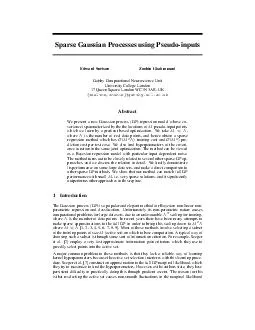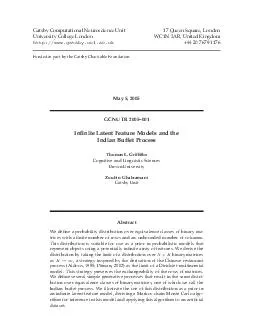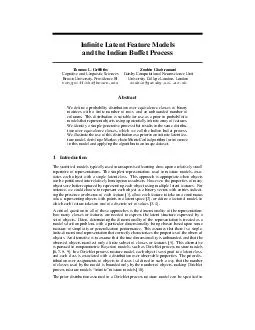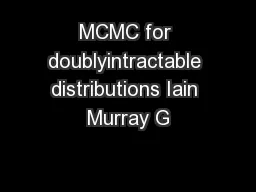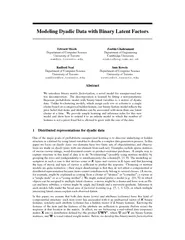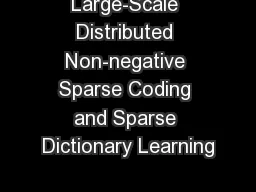PDF-Sparse Gaussian Processes using Pseudoinputs Edward Snelson Zoubin Ghahramani Gatsby Computational
Author : natalia-silvester | Published Date : 2014-12-15
uclacuk Abstract We present a new Gaussian process GP regression model whose co variance is parameterized by the the locations of pseudoinput points which we learn
Presentation Embed Code
Download Presentation
Download Presentation The PPT/PDF document "Sparse Gaussian Processes using Pseudoin..." is the property of its rightful owner. Permission is granted to download and print the materials on this website for personal, non-commercial use only, and to display it on your personal computer provided you do not modify the materials and that you retain all copyright notices contained in the materials. By downloading content from our website, you accept the terms of this agreement.
Sparse Gaussian Processes using Pseudoinputs Edward Snelson Zoubin Ghahramani Gatsby Computational: Transcript
Download Rules Of Document
"Sparse Gaussian Processes using Pseudoinputs Edward Snelson Zoubin Ghahramani Gatsby Computational"The content belongs to its owner. You may download and print it for personal use, without modification, and keep all copyright notices. By downloading, you agree to these terms.
Related Documents

